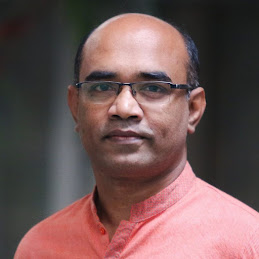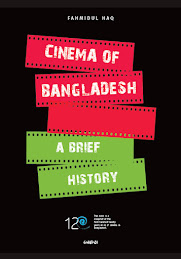After 1990, in a changed global economic and political situation, the scenario of Bangladeshi media was also changed as consistent with global and regional media scenario. Globalization demands market liberalization along with the liberalization of media as well. In that process, though the government of Bangladesh always heavily controlled the state owned radio and television channels but, in the early 90s, they gave permission to broadcast the satellite channels commercially. As a result, Bangladeshi audience was flooded by immense of foreign television channels, which had only the experience of Bangladesh Television (BTV) before 1990s.
The electronic media of Bangladesh is expansive at the moment. Now there are eight private satellite channels, which broadcast entertainment programs and news, in general. There are two FM radio channels, major programs of which are music and news. In media discourse, community radio is a much-talked issue but the government is yet to give permission of any community radio. According to the National Media Survey (NMS) in 1998, the national reach of the various media was radio 39%, television 42%, newspapers/magazines 15%, and cinema 17%. (Chowdhury, 2003: 107)
Just after the landmark of 1990, there was a ‘boom’ of print media. In 1990, the beginning of globalization and ending of direct and indirect military rule, of more than one decade, occurred simultaneously. On December 6, 1990, the first Caretaker Government, which was formed to arrange a free and fair election in the process of democratization, withdrew a newspaper control regulation from Special Powers Act, 1974. With this step, obtaining registration for a newspaper became easier. In a country of 130 millions of people, though only about 1.3 million of copies of newspapers are sold daily, there were 300 dailies in Bangladesh at the end of the millennium. (BCDJC, 2003: 4) For electronic media, there was one TV and another radio channel owned by the government. But for print media, it is an all-private-ownership show, mostly by corporate companies, which replaced politicians.
According to NMS in 1998, 15% of population read newspaper at least once a week. But newspaper reading is still an urban habit. Around half of city dwellers (44%) read newspapers against 10% in rural areas. (Chowdhury, 2003: 107) According to a study conducted by the Press Institute of Bangladesh in 1994, the findings of which were released in 1998, only 12% of the readerships consider newspapers to be credible and about 55% believe that there is a freedom of expression. The factors here include government intervention, pre-censorship, political pressure, obstacles put forward by different quarters, lack of neutral outlook and dependence of newspapers on government advertisements. (Rahman and Ahmed, 2004)
Although Article 39 (2) of Bangladesh constitution guarantees (a) the right of every citizen to freedom of speech and expression and (b) freedom of the press, there are 20 constraining laws, including Official Secrets Act, designed to repress freedom of expression. The specific areas of restrictions are related to the security of the state, friendly relations with foreign states, public order, decency or morality or in relation to contempt of court, defamation or incitement to an offence. After the strong demand of journalists and civil society, the government has decided to introduce Right to Information Act in 2007.
However, since 1990, Bangladeshi newspapers enjoy moderate level of press freedom as per the government control is concerned. But the electronic media is deprived of enjoying that freedom. Not only the state owned BTV or Bangladesh Betar (the radio channel), private TV channels are also under close supervision of the government. In 2007, the military backed present Caretaker Government, which took power on January 11, 2007 after series of political violence, ruled a state of emergency and the media went again under control and lost the gained freedom.
Press freedom in Bangladesh is also restrained by physical harassment of journalists in Bangladesh. Six journalists were killed and 282 injured, mostly the local reporters, in attacks across the country in three years till December 2003. (Rahman, 2004: 7) According to a study by Reporters Sans Frontiers (RSF), Bangladesh’s position is the 118th in terms of press freedom and it is because ‘political parties constantly endanger the lives of journalists’. (Rahman, 2004: 8) The Committee to Protect Journalists (CPJ) on March 5, 2004 described Bangladesh as the most violent country for newspersons in Asia. (Rahman, 2004: 71) Besides governmental control by laws and strict watch and physical harassment against journalists, corporate control by advertising and other media business related matters, restricts media to perform proper journalism.
Reference
Chowdhury, Afsan (2004). Media in Times of Crisis: National and International Issues. Shrabon. Dhaka.
Rahman, Golam and Ahmed, Helal Uddin (2004). Banglapedia: National Encyclopedia of Bangladesh. Multimedia CD. Asiatic Society of Bangladesh. Dhaka.
BCDJC (Bangladesh Centre For Development, Journalism and Communication) (2003); Madhyam (Bangladesh Media Directory); BCDJC; Dhaka.
Rahman, Mahfuzur (2004). The State of Media in Bangladesh. News Network. Dhaka.
Friday, December 21, 2007
Subscribe to:
Posts (Atom)

